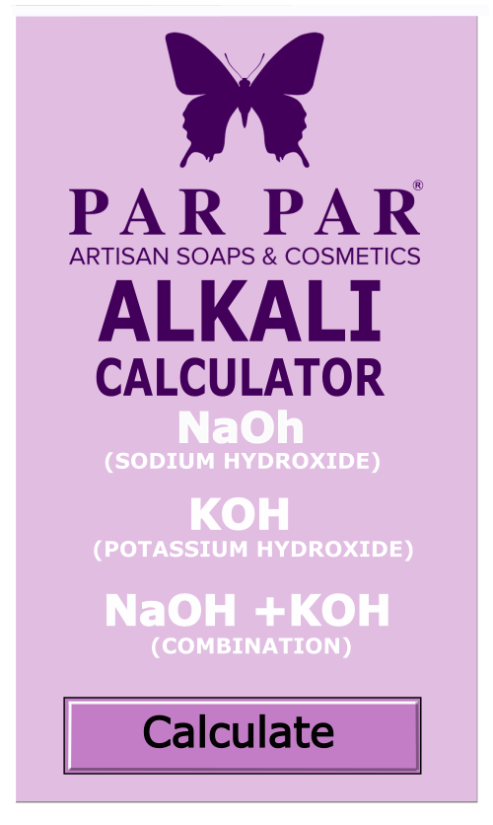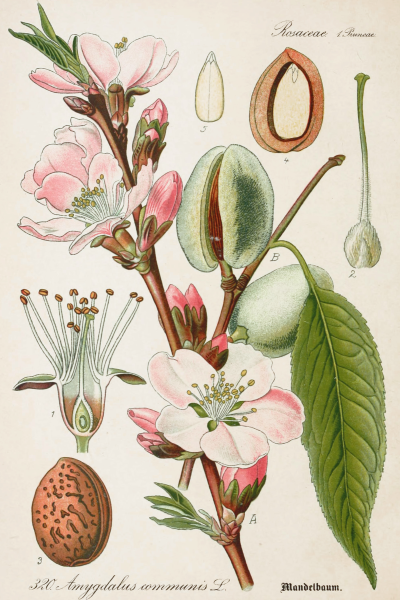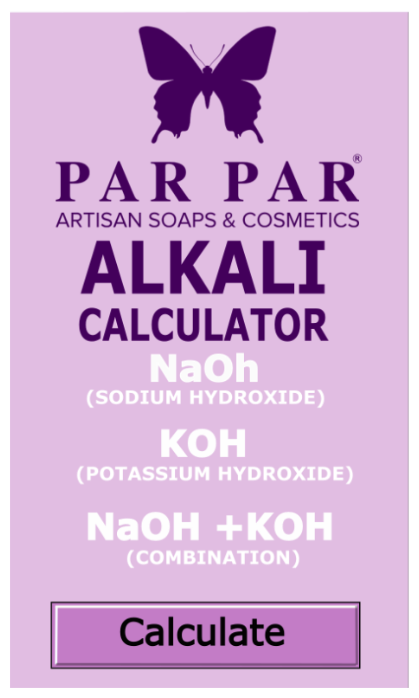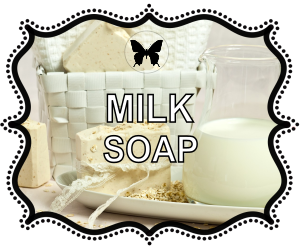
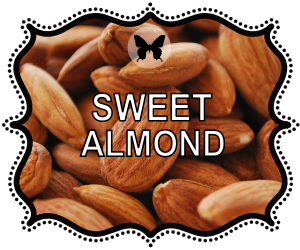
Table of Contents
How to Use Sweet Almond Oil
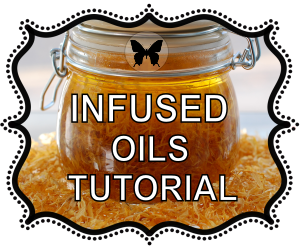

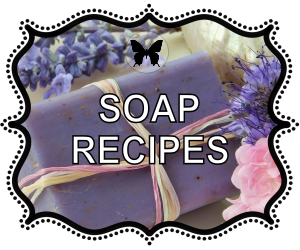
SWEET ALMOND OIL
Sweet almond (Prunus dulcis), also known as the almond tree, is a deciduous tree belonging to the Rosaceae family. The term “sweet almond” distinguishes it from the bitter almond (Prunus dulcis var. amara), which contains a small amount of hydrogen cyanide and is not suitable for raw consumption. The sweet almond is the variety commonly cultivated for culinary purposes and various applications.
It’s worth noting that sweet almonds are different from bitter almonds, which contain a substance called amygdalin that can release cyanide when crushed or chewed. Bitter almonds are not typically sold for consumption in their raw form and are more commonly used to extract almond oil for industrial or cosmetic purposes.
Sweet almonds (Prunus dulcis) are grown in various regions around the world that provide suitable climates and conditions for almond cultivation. The largest producers of sweet almonds are:
-
United States: The state of California is the leading producer of almonds, including sweet almonds, in the United States. The Central Valley in California has an ideal climate for almond orchards.
- Spain: Spain is a significant producer of sweet almonds, and the region of Catalonia is particularly known for almond cultivation.
- Australia: Australia, especially the state of Victoria, is a notable producer of sweet almonds.
- Iran: Iran has a long history of almond cultivation, and it is a major producer of almonds, including sweet almonds.
- Morocco: Morocco is another country where sweet almonds are cultivated, and almonds are an important agricultural product.
- Turkey: Turkey is a significant producer of almonds, and it cultivates various almond varieties, including sweet almonds.
-
Italy: Italy, particularly regions like Sicily and Apulia, is involved in the cultivation of sweet almonds.

Key Features of the Sweet Almond
- Fruit: The fruit of the sweet almond tree is a drupe, and the seed inside is the almond that we commonly eat. Almonds are classified as nuts, but they are technically seeds.
- Appearance: The almond tree has attractive pink or white blossoms that appear in early spring before the leaves emerge. The leaves are serrated and oval-shaped.
- Cultivation: Sweet almond trees are grown in regions with a Mediterranean climate, including parts of California, Spain, Italy, and the Middle East. They require well-drained soil and a sunny environment.
- Nutrition: Almonds are known for their nutritional value. They are rich in healthy monounsaturated fats, protein, fiber, vitamin E, magnesium, and other essential nutrients. Almonds are often included in a balanced diet for their potential health benefits.
- Culinary Uses: Almonds can be consumed raw, roasted, or processed into various products. They are a common ingredient in both sweet and savory dishes, snacks, desserts, and baked goods. Almond oil, extracted from sweet almonds, is also widely used in cooking and as a base for skincare products.
- Health Benefits: Almonds are associated with several health benefits, including heart health, weight management, and blood sugar control. They are often recommended as a nutritious snack.
What is Sweet Almond Oil Used For?
Sweet almond oil is a popular and versatile oil that has various uses, particularly in skincare, haircare, and culinary applications. Here are some common uses of sweet almond oil:
- Skincare:
- Moisturizer: Sweet almond oil is rich in fatty acids and vitamin E, making it an excellent natural moisturizer for the skin. It helps to nourish and hydrate the skin, leaving it soft and smooth.
- Massage oil: The oil has a lightweight texture, making it suitable for use as a massage oil. It can be applied to the skin to promote relaxation and soothe muscles.
- Haircare:
- Hair conditioner: Sweet almond oil can be applied to the hair as a conditioner to add shine, reduce frizz, and moisturize the hair strands.
- Scalp treatment: Massaging sweet almond oil into the scalp may help soothe dryness and reduce dandruff. It is believed to nourish the hair follicles and promote healthy hair growth.
- Makeup remover:
- Sweet almond oil can be used as a natural and gentle makeup remover. It helps dissolve makeup without stripping the skin of its natural oils.
- Anti-aging treatment:
- The vitamin E content in sweet almond oil is known for its antioxidant properties, which may help protect the skin from oxidative stress and signs of aging.
- Culinary uses:
- Sweet almond oil is sometimes used in cooking, particularly in salad dressings or as a finishing oil for certain dishes. It has a mild, slightly nutty flavor that can enhance the taste of foods.
- Eczema and dermatitis:
- Some people use sweet almond oil to alleviate symptoms of skin conditions like eczema and dermatitis due to its moisturizing and soothing properties. However, it’s essential to consult with a healthcare professional for personalized advice.
- Lip balm:
- The emollient properties of sweet almond oil make it a good ingredient for DIY lip balms. It helps keep the lips soft and prevents dryness.
It’s important to note that while sweet almond oil is generally considered safe for topical use, individuals with nut allergies should exercise caution. Always perform a patch test before applying it to a larger area of the skin and consult with a healthcare professional if you have any concerns or specific skin conditions.

SAPONIFICATION VALUE: 186-196 mg KOH/g
Saponification Values and Why They Vary
- NaOH – Sodium Hydroxide Multiplyer (oz): 0.14
- KOH – Potassium Hydroxide Multiplyer (oz): 0.197
- Quick and Easy – Use the Par Par Alkali Calculator
FATTY ACIDS COMPOSITION (Fatty Acid Fraction):
| Lipid | Fatty Acid | Range | Typical | Soap Property |
|---|---|---|---|---|
| C18:2 | Linoleic | 7.0 - 30.0 % | 21.0 % | Conditioning, Moisturizing, Silky Lather |
| C18:1 | Oleic | 62.0 - 86.0 % | 70.0 % | Conditioning, Moisturizing |
| C16:0 | Palmitic | 4.0 - 9.0 % | 5.5 % | Hardness, Stable Creamy Lather |
INCI: Prunus Amygdalus Dulcis (Sweet Almond) Oil
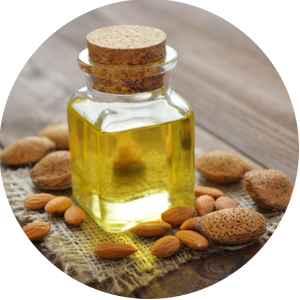
PROPERTIES OF SWEET ALMOND OIL:
Sweet almond oil is known for its rich composition, containing various beneficial components that contribute to its properties. Here are some key properties of sweet almond oil:
-
Moisturizing: Sweet almond oil is an excellent emollient, meaning it helps to soften and soothe the skin. It’s known for its moisturizing properties, making it effective for dry and sensitive skin.
- Lightweight Texture: The oil has a light and non-greasy texture, making it easy to apply and absorb into the skin without leaving a heavy residue.
- Rich in Fatty Acids: Sweet almond oil is high in monounsaturated fatty acids, such as oleic acid, and polyunsaturated fatty acids, including linoleic acid. These fatty acids contribute to the oil’s nourishing and moisturizing properties.
- Vitamin E Content: Vitamin E is a powerful antioxidant, and sweet almond oil contains a good amount of this vitamin. Antioxidants help protect the skin from oxidative stress and free radical damage.
- Anti-Inflammatory: The oil has anti-inflammatory properties, which may help soothe irritated and inflamed skin. This makes it suitable for conditions such as eczema and dermatitis.
- Promotes Skin Health: Regular use of sweet almond oil can contribute to healthier-looking skin by promoting hydration, improving skin tone, and reducing the appearance of fine lines and wrinkles.
- Hair Conditioning: Sweet almond oil is often used as a hair conditioner. It helps nourish and hydrate the hair, making it smoother and more manageable. Massaging the oil into the scalp may also provide benefits for the hair and scalp health.
- Mild, Nutty Scent: Sweet almond oil has a mild, slightly sweet, and nutty aroma, which is generally well-tolerated by most people.
- Versatility: In addition to skincare and haircare, sweet almond oil is used in various cosmetic and personal care products, such as soaps, lotions, and massage oils.
It’s important to note that individual experiences with sweet almond oil may vary, and it’s always recommended to perform a patch test before applying it to larger areas of the skin. Additionally, individuals with nut allergies should exercise caution and consult with a healthcare professional if there are any concerns.

COLOR, VISCOSITY & AROMA
The color, viscosity, and aroma of sweet almond oil can vary based on factors such as the processing method (refined or unrefined), the quality of the oil, and storage conditions. Here are some general characteristics:
-
Color:
- Unrefined Sweet Almond Oil: Unrefined or cold-pressed sweet almond oil is typically pale yellow to golden-yellow in color. It may retain a slightly cloudy appearance due to the presence of natural compounds and particles from the almonds.
- Refined Sweet Almond Oil: Refined sweet almond oil is usually lighter in color, appearing clear or nearly colorless.
- Viscosity:
- Light Texture: Sweet almond oil has a light and non-greasy texture, making it easily absorbed by the skin. It is not a thick or heavy oil.
-
Aroma:
- Mild and Nutty: Sweet almond oil has a mild, slightly sweet, and nutty aroma. The scent is generally subtle and not overpowering. This makes it a versatile carrier oil in various applications where a light fragrance is desirable.
- Unscented Varieties: Some refined sweet almond oils are processed to be virtually odorless, making them suitable for applications where a neutral scent is preferred.
It’s important to note that individual preferences for aroma can vary, and the specific characteristics of sweet almond oil may be influenced by factors such as the region of production, the specific almond varieties used, and the processing methods employed by the manufacturer.
When selecting sweet almond oil for a particular application, such as skincare or culinary use, it’s advisable to choose a high-quality oil and, if possible, perform a sensory evaluation to ensure it meets your expectations. Always check the product label or consult with the supplier for detailed information on the specific sweet almond oil being used.
Products That Use This Ingredient:
Commercial and handmade soaps (liquid & solid soaps), beauty lotions, cosmetic creams, oils for aromatherapy, and massage oils.
Shelf Life:
Although slow to become rancid; users can expect their product to last up to a year with proper storage (cool, out of direct sunlight). Growers recommend refrigeration after opening.
Best Used By: Use within one year from date of purchase. Exposure to extreme heat will lessen the shelf life of almond oil
Storage: Room temperature. Airtight container.
Cautions: This oil is known to stain fabric if it comes in direct contact.
Disclaimer: All information, appearing herein is based upon data that are believed to be reliable. However, it is the user’s responsibility to determine the suitability of the product before use. Since the actual use of the product is beyond our control, no guarantee, express or implied, is made by Par Par Soaps & Cosmetics of the product nor does Par Par Soaps & Cosmetics assume any liability arising out of use, by others, of the product, referred to herein.
Fatty Acid Composition Source: https://pubchem.ncbi.nlm.nih.gov/
Making Homemade Soap with
Sweet Almond Oil
S weet almond oil is a popular choice in soapmaking due to its mild properties and skin-nourishing characteristics. Here are some considerations and benefits of using sweet almond oil in soapmaking:
Soap Making Tip:
When you are purchasing ingredients, pay close attention to whether the ingredient is being sold by weight or by volume. The measurements for this recipe are by weight, and may not be equal to the volume measurement of the same number. For example, eight ounces of carrier oil by volume (1 cup) may weigh less than 8 ounces on a scale. If you are purchasing ingredients by volume, order a little more than what the recipe calls for in weight.
Almond Coconut Soap Recipe
Soap weight before CP cure or HP cook – 1.5 LBS
How to Size a Recipe to Your Mold
Ingredients (measured by weight)
3.2 Ounces (90.72g) Sweet Almond Oil (20%)
1.6 ounces (45.36g) Castor Oil (10%)
4.8 ounces (136.08g) Coconut Oil 92 Degree) (30%)
6.4 (181.44g) ounces Olive Oil (10%)
2.28 ounces (64.55g) Sodium Hydroxide (NaOH/Lye)
6.08 ounces (172.36g) of water (38% of Oils)
.5 ounce (14.18g) Coconut Essential Oil (optional)
Four tablespoons Almond Flour
Directions
Start by double-checking this recipe in the Par Par Lye Calculator or in another soap calculator that you know and trust.
1. Prepare and dress in suitable clothes that cover your legs, feet, and arms thoroughly. Gather your equipment, ingredients, and safety gear in a clean, secluded workspace where no one will be coming in and out. Keep children and pets out of your workspace at all times. If you are new to soap making, read our article Make Soap Safely
2. Choose your soap mold. If you are using a wood mold, line it with wax paper and set it aside. It is not necessary to line a silicon mold.
3. Put on your safety gear, such as your goggles and safety mask. Next, carefully measure and divide all of your ingredients using an accurate scale.
4. Add the water to a deep, heat-proof container with high walls. Next, add the lye and allow it to dissolve. Be careful not to breathe in the fumes as the chemical mixes with the water. Set the mixture aside in a safe place, then move on to the next step.
5. Melt the Coconut Oil until it reaches about 100 – 110F degrees. Add Argan Oil, Olive Oil, and 6.4 ounces of the Sweet Almond Oil to the pot and remove it from heat.
Mixing the Lye and Oils
6. Measure the temperature of the lye mixture when it comes down below 110F check the temperature of the oil again. When both the lye mixture and the mixture of oils fall between 90 – 110F, they can be mixed.
7. Add the lye mixture into the melted oils and then begin stirring. Using an immersion blender (also called a stick blender) will speed this process up quite a bit. Stir until you achieve “trace.” Trace is when the mixture is thick enough to drizzle a trail across its surface, similar in consistency to a pudding or custard.
8. When the soap reaches trace, add the remaining 1.6 ounces of Sweet Almond Oil and the coconut essential oil. Stir again for about one minute to make sure the ingredients are well combined. Stir the Almond Flour in next using a spoon or spatula instead of the blender.
9. Pour the soap into your soap mold, tapping it gently to make sure it distributes evenly. Cover the top with plastic wrap, and if the mold has a top, put the lid on. Wrap the mold in a towel or a blanket and allow it to harden for 24 hours.
Curing the Soap
10. After 24 hours, the soap should have hardened enough for the soap to me un-molded. If it still seems soft, give the soap another 24-48 hours before trying again. Gently tap or turn the soap loaf from your mold, then slice it into bars. Set the bars on a cooling/drying rack somewhere cool and dry.
The soap will cure in four to six weeks. Leaving the soap to cure for the full six weeks will result in a soap that is harder and milder.
For more detailed instructions on making Cold Processed Soap, please check out our first tutorial, How to Make Cold Processed Soap.
| Soap Bar Quality | Range | This Recipe |
|---|---|---|
| Hardness | 29-54 | 32 |
| Cleansing | 12-22 | 20 |
| Conditioning | 44-69 | 63 |
| Bubbly | 14-46 | 29 |
| Creamy | 16-48 | 21 |
| Iodine | 41-70 | 63 |
| INS | 136-165 | 148 |
| Fatty Acid Content | Value |
|---|---|
| Lauric | 14 |
| Myristic | 6 |
| Palmetic | 10 |
| Stearic | 2 |
| Ricenoleic | 9 |
| Oleic | 45 |
| Linoleic | 9 |
| Lenolenic | 0 |
